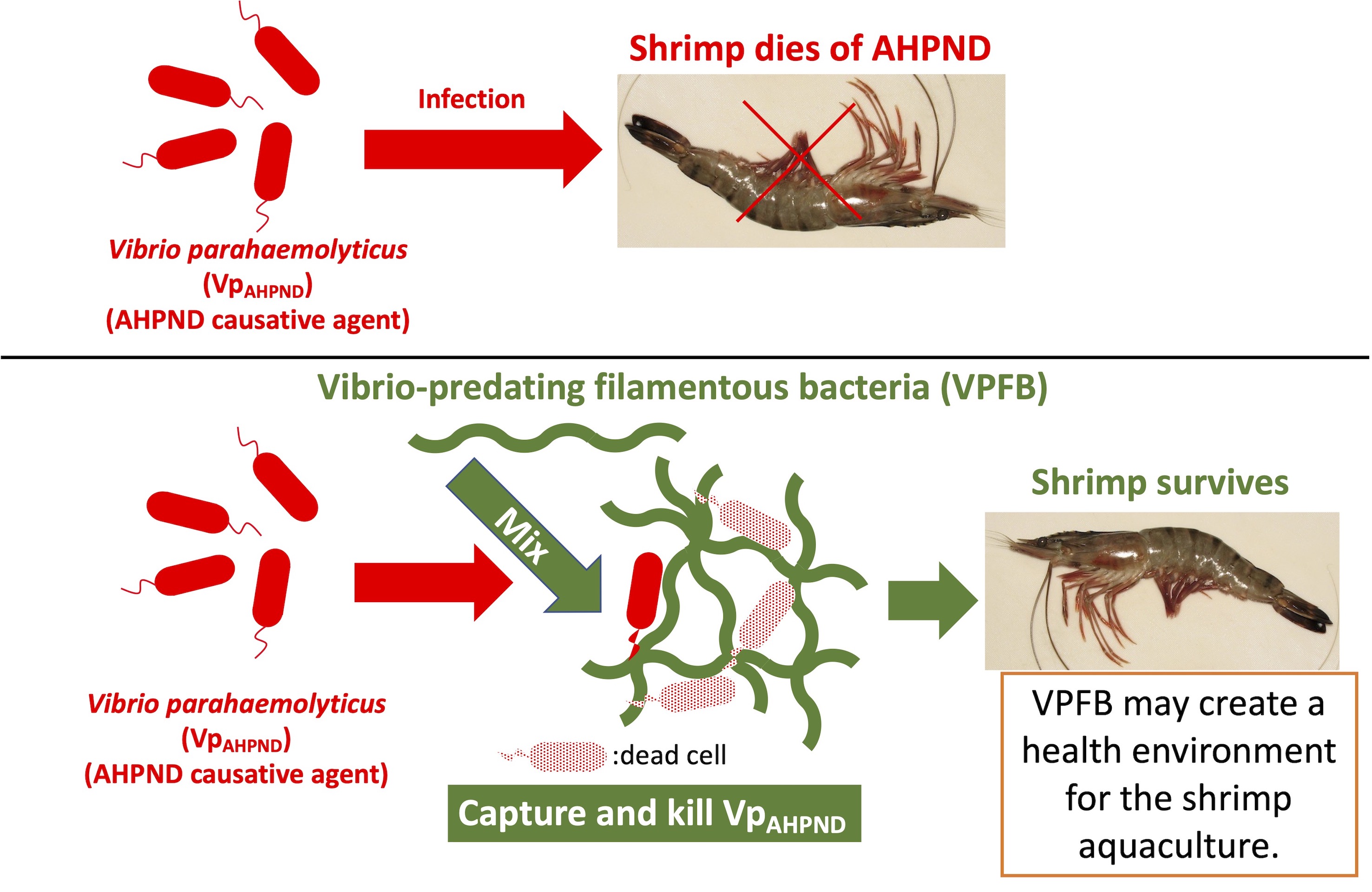RESEARCH HIGHLIGHTS - The Vibrio-predatory filamentous bacteria effectively removed shrimp pathogenic Vibrio in vitro
by Yeoh, H.I., Izzatty, R., Furusawa, G., Amirul, A.-A.A., Shu-Chien, A.C., Sung, Y.Y.
Acute hepatopancreatic necrosis (AHPND) caused by pathogenic Vibrio parahaemolyticus strains (VpAHPND) and other Vibrio spp. the disease has resulted in significant economic losses in shrimp aquaculture in many countries including Malaysia. Several biocontrol agents on VpAHPND, such as probiotics, vaccination, and bioflocs, have been proposed. However, each of these alternatives has limitations in removing VpAHPND from aquatic environments. Ms. Hao Ing Yeoh and Ms. Rosli Izzatty, under the supervision of Dr. Go Furusawa, assessed the potential of Vibrio-predatory filamentous bacteria (VPFB) as a novel biocontrol agent on VpAHPND.
Three VPFBs from the genera Saprospira (CCB-QB6) and Aureispira (CCB-E and F) were isolated from seagrass habitat in Penang, Malaysia. The VPFBs exhibited predation on VpAHPND and other Vibrio spp. including V. owensii, V. harveyi, and V. alginolyticus. The VpAHPND and VPFB co-culture experiments demonstrated reduction of VpAHPND cell number to less than 1 x 104 cells/ml from an initial (1 x 107 cells/ml) within 24 h of introducing strain E or F. Scanning electron microscopy revealed that VPFBs formed cell aggregates with VpAHPND within a few minutes by attachment on the cell surface of VPFBs cells before the Vibrio cells destroyed. These findings revealed that VPFBs have the potential to be used as a biocontrol agent for removing VpAHPND in shrimp aquaculture.
Link: doi.org/10.1016/j.aqrep.2021.100910
CCB Ref.: 2022_RH_01_gf
Date: 10/05/2022
- Hits: 826